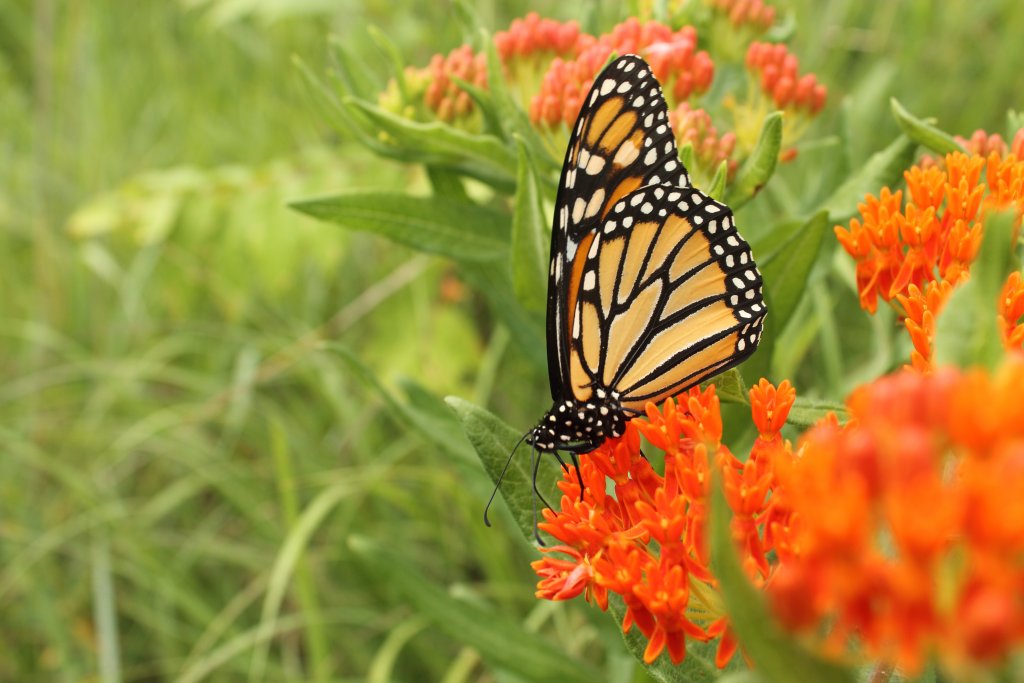Did you know that you can build your butterfly garden? No matter how big or small your garden is, you too can have your butterfly haven with the right plants and preparation. So, why are butterfly gardens a thing?
Having butterflies in your garden can be a joyful and fulfilling experience with green and black caterpillars. They’re beautiful, and they’re also helpful. Butterflies help pollinate flowering plants, and they provide food for other wildlife such as birds.
Other than that, butterflies in your garden signify the health of your environment. Butterflies are an “indicator” species, and their presence can indicate a healthy garden, whereas their absence can imply an unhealthy garden.
Butterfly gardening can be a fun activity for your and your family. You get to learn about wildlife and create a healthier environment. Not to mention, you’ll have a pretty garden to show off to your guests.
If you want to start your butterfly garden, here’s what you need before you can start bringing in those pretty monarchs.
Inspect your space thoroughly.
Take a look at your space and decide on where you’d like your butterfly garden to be. You might be worried if you don’t have enough sunlight since butterflies like sunny spots. However, some butterflies prefer the shade.
Once you have decided on a place to build your garden, plan out the layout of your butterfly garden, make room for plants, flowers, and a small pot of water.
Get your drainage system in place.
You don’t want a flooded butterfly garden. A flooded garden will kill your plants, grass and bring in insects you don’t want around. To avoid this, consider installing a french drain if you don’t have one. This will avert water away from your garden and ensure that it won’t flood.
You should also inspect your soil. If your soil is unhealthy, your plants won’t flourish, and you’ll have a barren garden.
Plant high and low
Each butterfly is different. Some love to nest in high trees, and some love to float on shrubs or grasses. So, be creative and don’t limit your garden due to just small plants. You can go for tree canopies and some nice shrubs.
Make sure to plan accordingly and consider the size of your garden. For example, you wouldn’t want to plant large trees in a small space. Also, you should consider the accessibility to food in addition to how you want to grow your trees and shrubs.
Trees and shrubs are also excellent for resting places and shade for butterflies. They protect butterflies from predators, harsh weather and act as a shelter for them. If you want to go the extra mile, you could also provide a wooden box with a small opening for their use.
Create a pathway.
Create a pleasant and open pathway to add some character to your butterfly garden. An excellent way to upgrade your landscape is with some gravel. It’s a cheap option and can change the way your garden looks instantly.
You can even have gravel delivered to your home. Laying out gravel is also a simple task. You wouldn’t need to call in a professional to help, and you can do it in the comfort of your own home.
Plant flowers that butterflies love.
One of the most important things you can do is plant flowers or plants that attract butterflies. To have a fruitful butterfly garden, you should always fill it with two types of plants— nectar plants and host plants. Adult butterflies drink nectar, so having nectar plants around will attract them to your garden.
On the other hand, host plants provide a safe space for butterflies to lay their eggs and are excellent sources of food for caterpillars.
Have a water source ready.
A water source doesn’t need to be complicated. You don’t need a large pool of water. A simple puddling station made with just a shallow dish filled with water is more than enough to get you started. Simply fill a shallow dish with some water, and don’t forget to add soil or sand to create your muddy water.
Butterflies need to stay hydrated and receive the proper amount of nutrients and vitamins. One of the nutrients they need is found in muddy water. As the shallow dish begins to empty, continue to add water and organic matter to keep your butterflies hydrated and nourished.
Stay away from chemical pesticides.
Pesticides can be fatal for butterflies and other pollinators. Although insects and parasites can be harmful to your butterfly garden, you should stay away from any chemical or toxic pesticides. The best way to get rid of pests is to plant flowers that repel pests— this is a technique called companion planting.
Even the mildest pesticides can be harmful to butterflies. So, it’s best to steer clear of any pesticides if you want your butterfly garden to flourish and thrive.

